A.I.R. Gallery
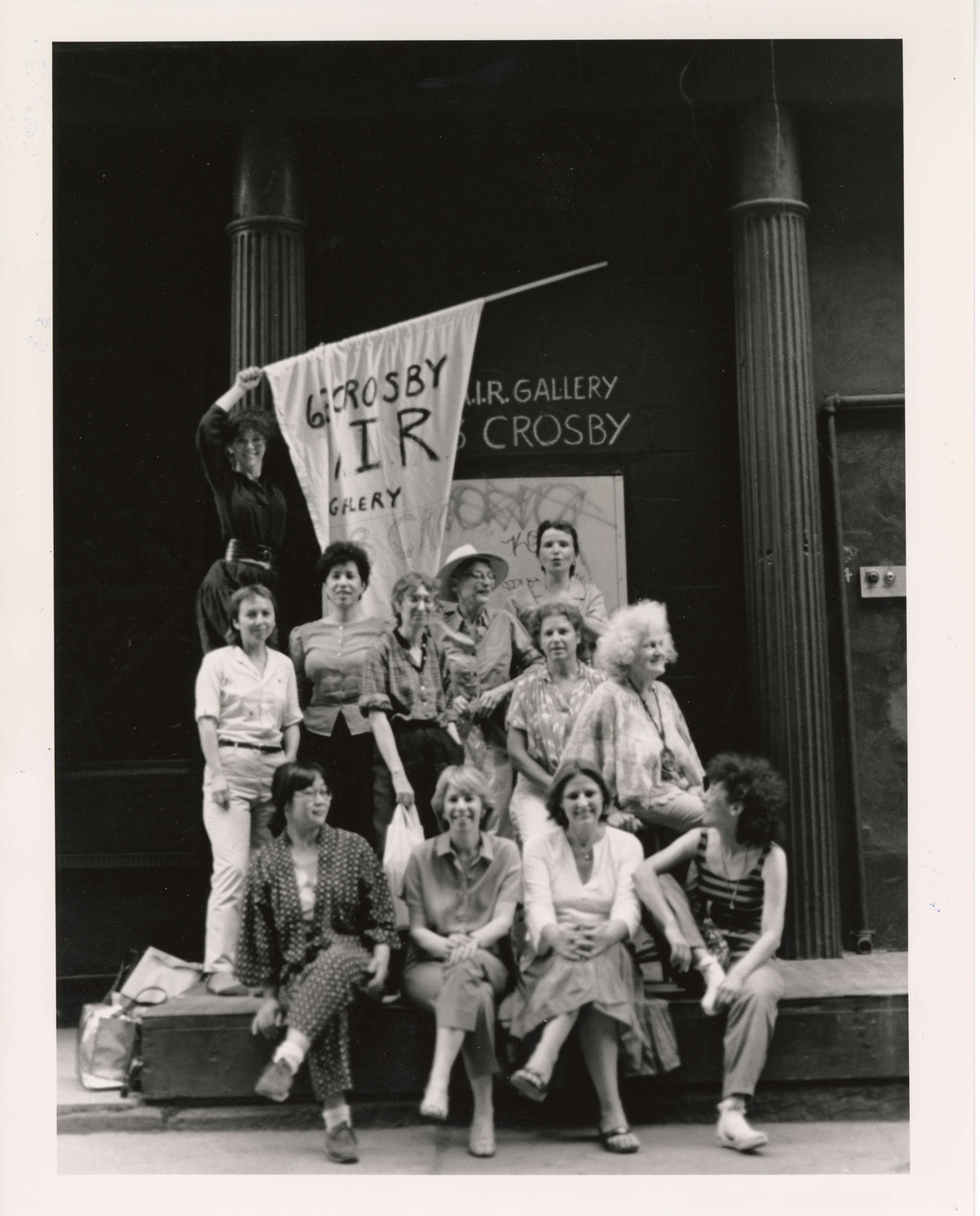
Copyright held by the Estate of Mary Beth Edelson; preserved through a partnership with The Feminist Institute. See record
This 1981 photograph of A.I.R. Gallery members in front of the 63 Crosby Street location includes Edelson holding the flag, then below left to right are Daria Dorosh, Lenore Goldberg, Dotty Attie, Nancy Spero, Anne Healy, Patsy Norvell, Sari Dienes, the bottom row includes Kazuko Miyamoto, Elaine Reichek, Donna Byars, and Sandra Eisenstein. A.I.R. is the oldest women-run art collective in New York City, founded in 1972.

Copyright held by the Estate of Mary Beth Edelson; preserved through a partnership with The Feminist Institute. See record
Edelson was invited to join A.I.R. Gallery in 1976 and participated in several events at the Gallery devoted to the Great Goddess as seen in this archival material delineating events held in April of that year. Edelson gave an overview on Great Goddesses at the 97 Wooster Street location. Additional events were held at her loft on Mercer Street that included a study of the history of ancient Goddesses, building a community interested in exploring symbols and rituals, and looking forward to “a fusion, layering, melting of our past icons with the life-giving powers of our present Goddess consciousness.”
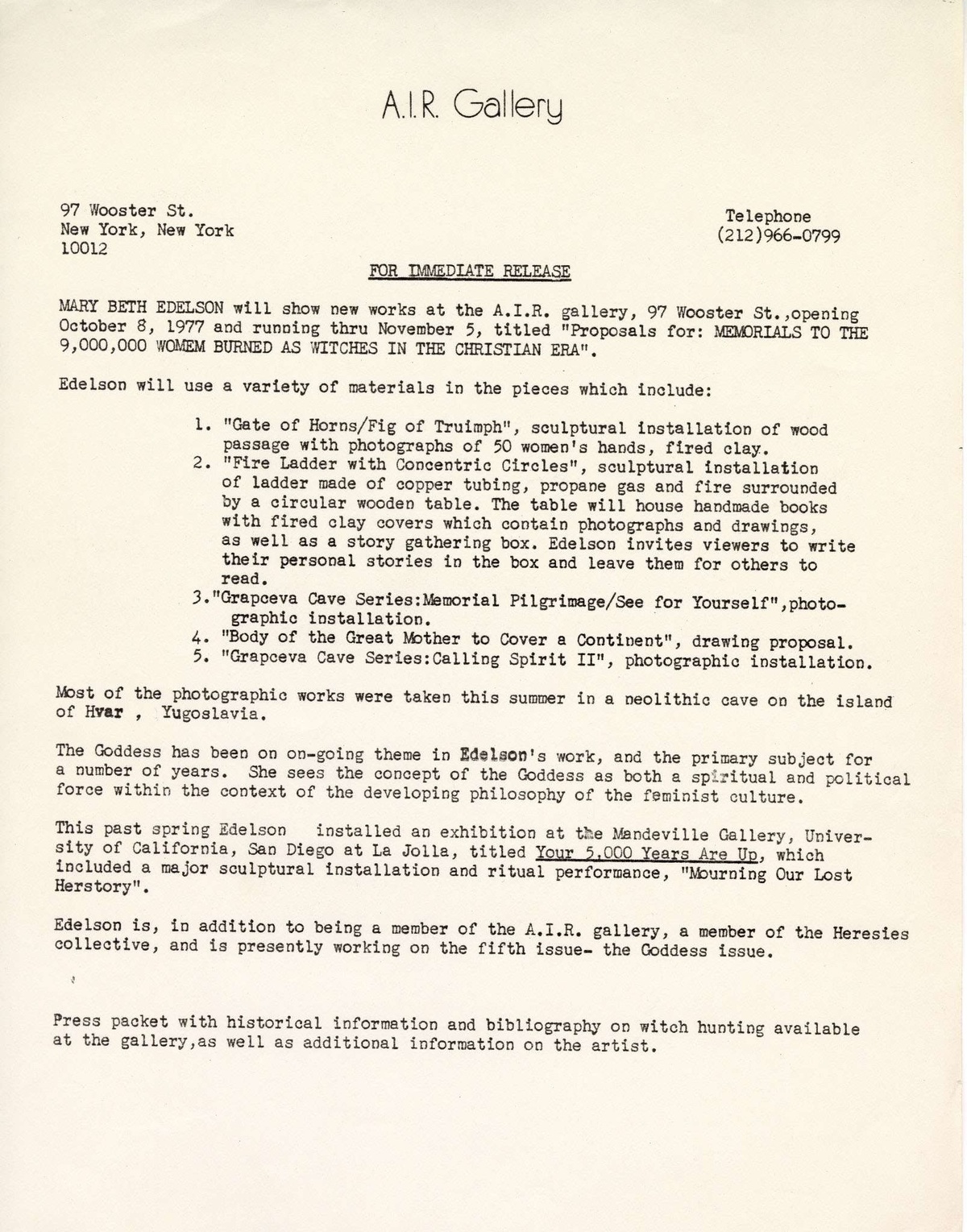
Preserved through a partnership between Mary Beth Edelson and The Feminist Institute, 2018. See record
The following year A.I.R. presented Edelson’s iconic exhibition Proposals for: “Memorials to the 9,000,000 Women Burned as Witches in the Christian Era” elements of which are described in this press release. Also depicted here is the flyer for reproductions of Edelson’s poster series that were for sale at A.I.R. and included Death of Patriarchy/Heresies (1976), Death of the Patriarchy/A.I.R. Anatomy Lesson (1976), Happy Birthday America (1976), and the most well-known Some Living American Women Artists/Last Supper (1972), the originals of which are in the permanent collection of the Museum of Modern Art in New York.
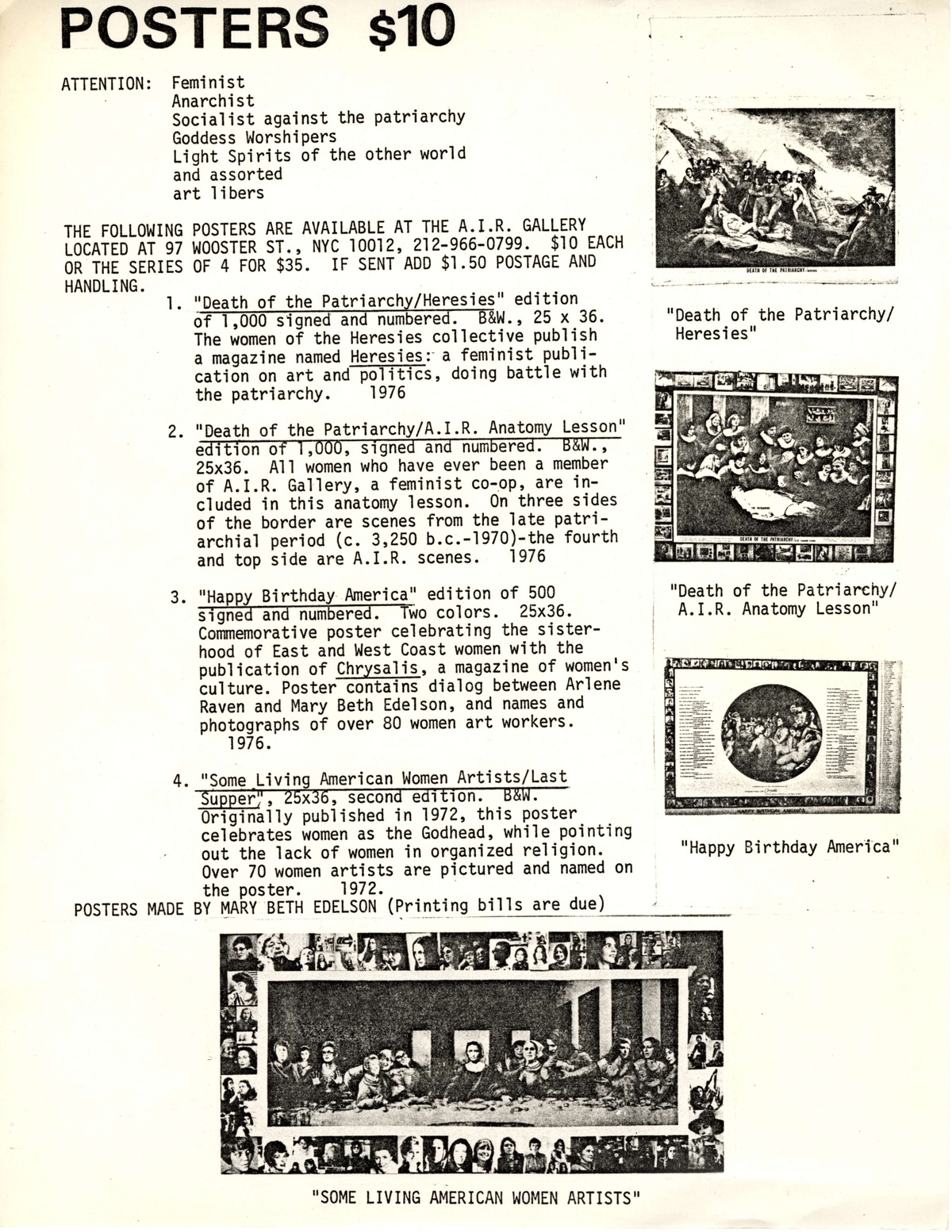
Copyright held by the Estate of Mary Beth Edelson; preserved through a partnership with The Feminist Institute. See record
Edelson sold reproductions of these wall collages to increase awareness of women artists and to raise funds for various women’s organizations.
Heresies Collective
Heresies and the Goddess Issue
Edelson was a founding member of the Heresies Collective which was active from 1976 to 1996. There was much discussion on what to name the group and it came down to Pink, in reference to the socialist/Marxist perspective of 1970s feminism, and Heresies, reflecting on the cultural feminist perspective. Several members of the Heresies Collective went to Joan Snyder’s farm for a weekend of planning and bonding.
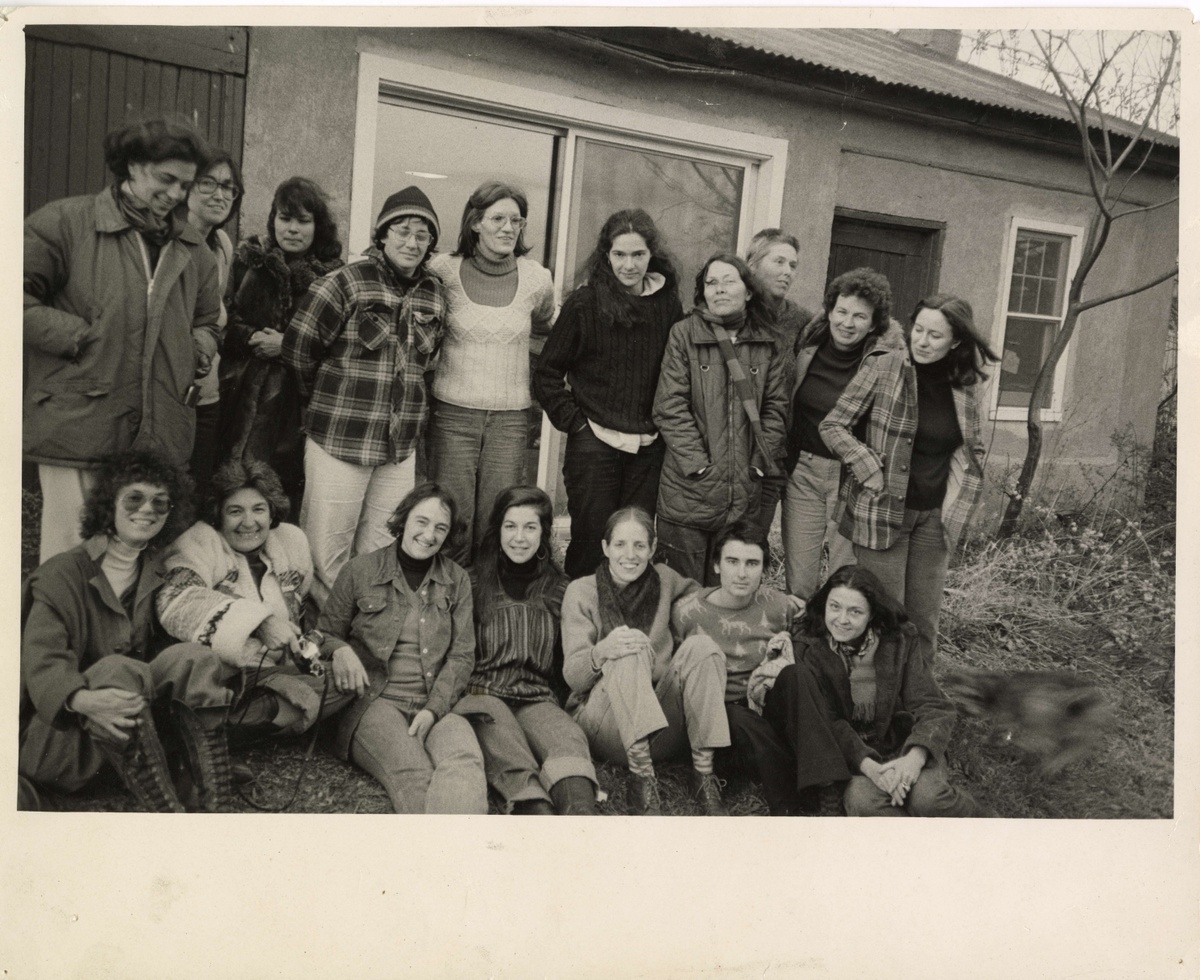
Copyright held by the Estate of Mary Beth Edelson; preserved through a partnership with The Feminist Institute. See record
Members pictured here include, standing: Mary Miss, Joyce Kozloff, Arlene Ladden, Joan Snyder, Patsy Beckert, Elizabeth Hess, May Stevens, Harmony Hammond, Sally Webster, Susana Torre and, seated: Miriam Schapiro, Mary Beth Edelson, Lucy Lippard, Joan Braderman, Elizabeth Weatherford, Mary Pottenger, and Michelle Stuart (photograph by Edelson). Members not pictured are Elke Solomon, Pat Steir, and Nina Yankowitz.
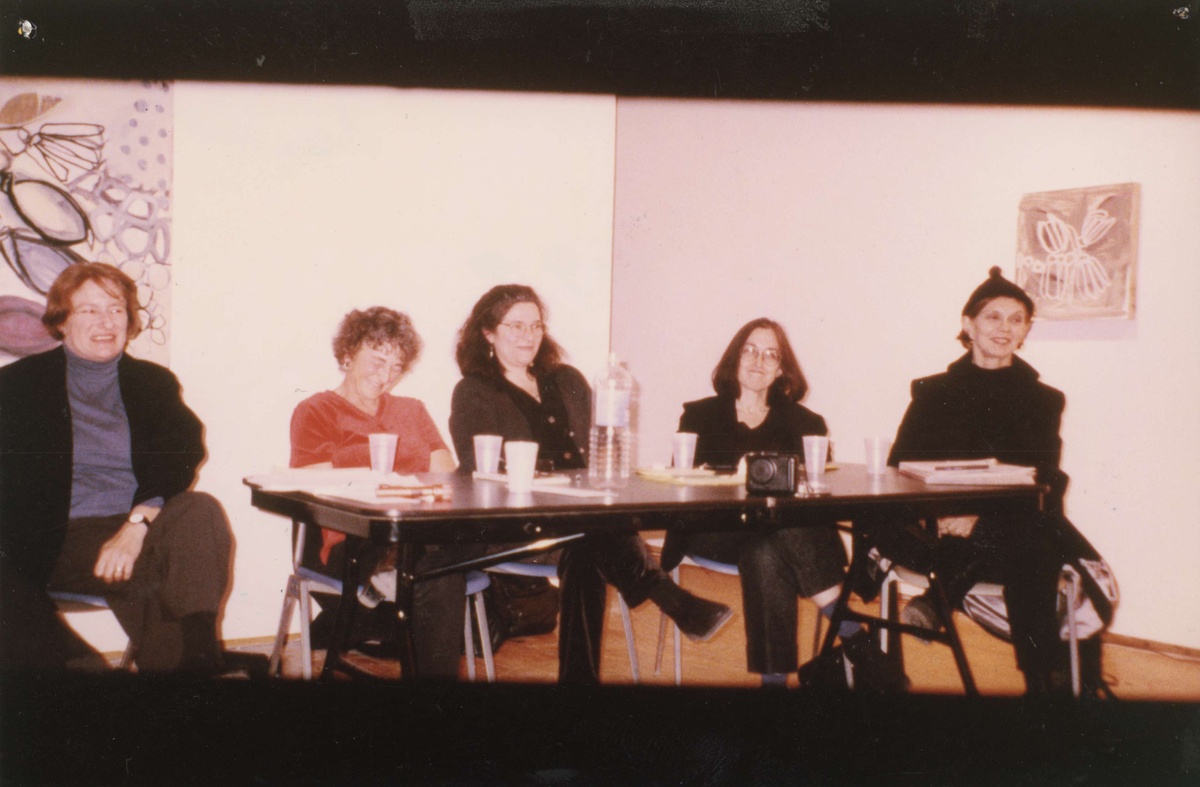
Copyright held by the Estate of Mary Beth Edelson; preserved through a partnership with The Feminist Institute. See record
This later photograph was taken from a panel at A.I.R. Gallery reflecting on Heresies and includes Torre, Lippard, Hess, Kozloff, and Edelson.
“Heresies was thoughtful, slow, and deliberate…it was a truly democratic organizational concept.“
Mary Beth Edelson, in conversation with Miriam Schapiro. (2002)
Between 1977 and 1993, the Collective published twenty-seven issues of the journal Heresies: A Feminist Publication on Art and Politics. The first issue described its ideals that included the view that art can make a political impact and that their identities as women effected their work. They also desired to make a space for the “creative energies among women” as well as expanding the definition of what art can be.
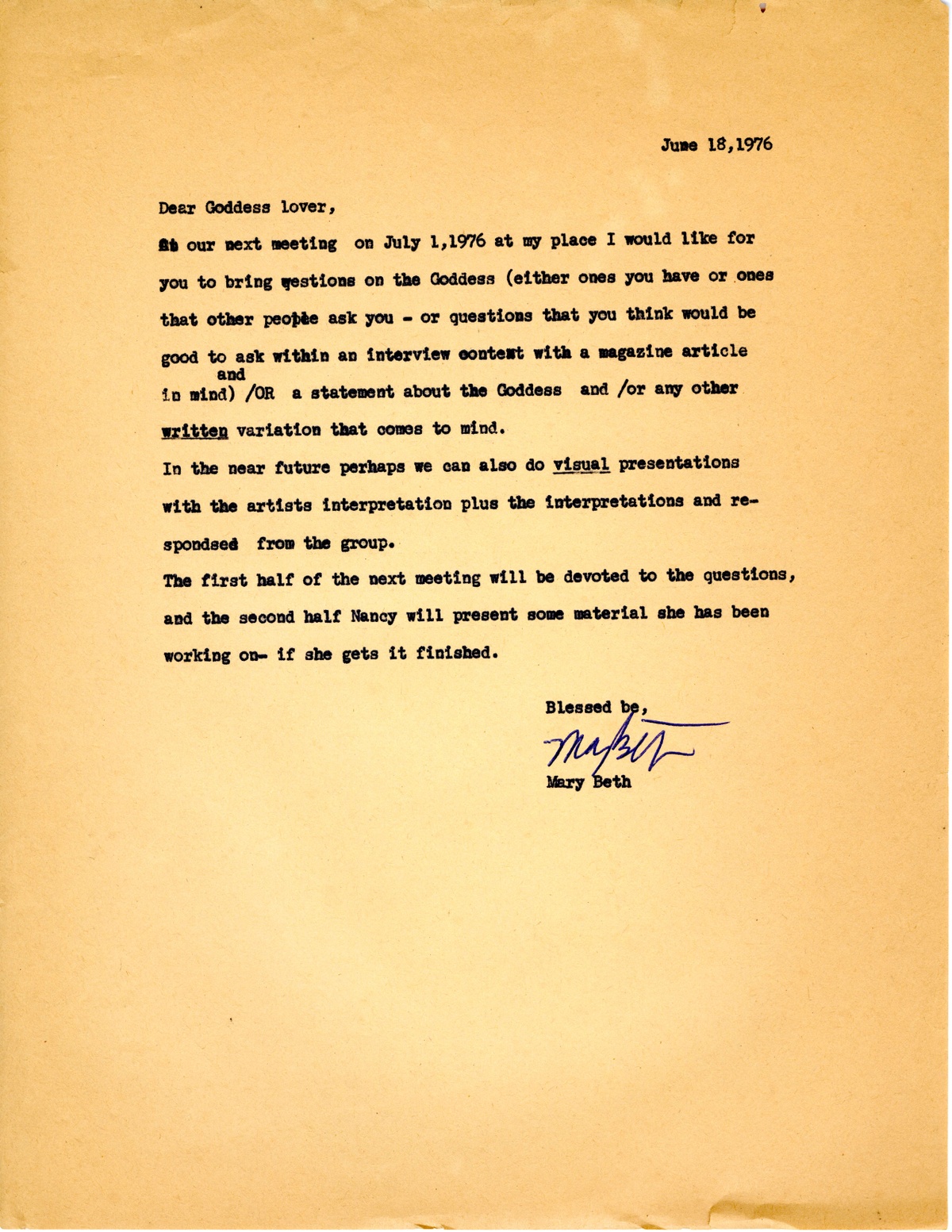
Copyright held by the Estate of Mary Beth Edelson; preserved through a partnership with The Feminist Institute. See record
In a conversation between Edelson and Schapiro, Edelson noted, “Heresies was thoughtful, slow and deliberate…it was a truly democratic organizational concept. Although we complained that the meetings were long, we heard everybody’s point of view until we got a solution…a consensus. The other groundbreaking process was that, in addition to the Mother Collective, each issue had its own totally autonomous collective of different individuals who were free to design the form and content of that issue as they wished, within the budgetary constraints of the magazine. The result was that both the process and each issue were unique.” (Edelson, 2002, 40)
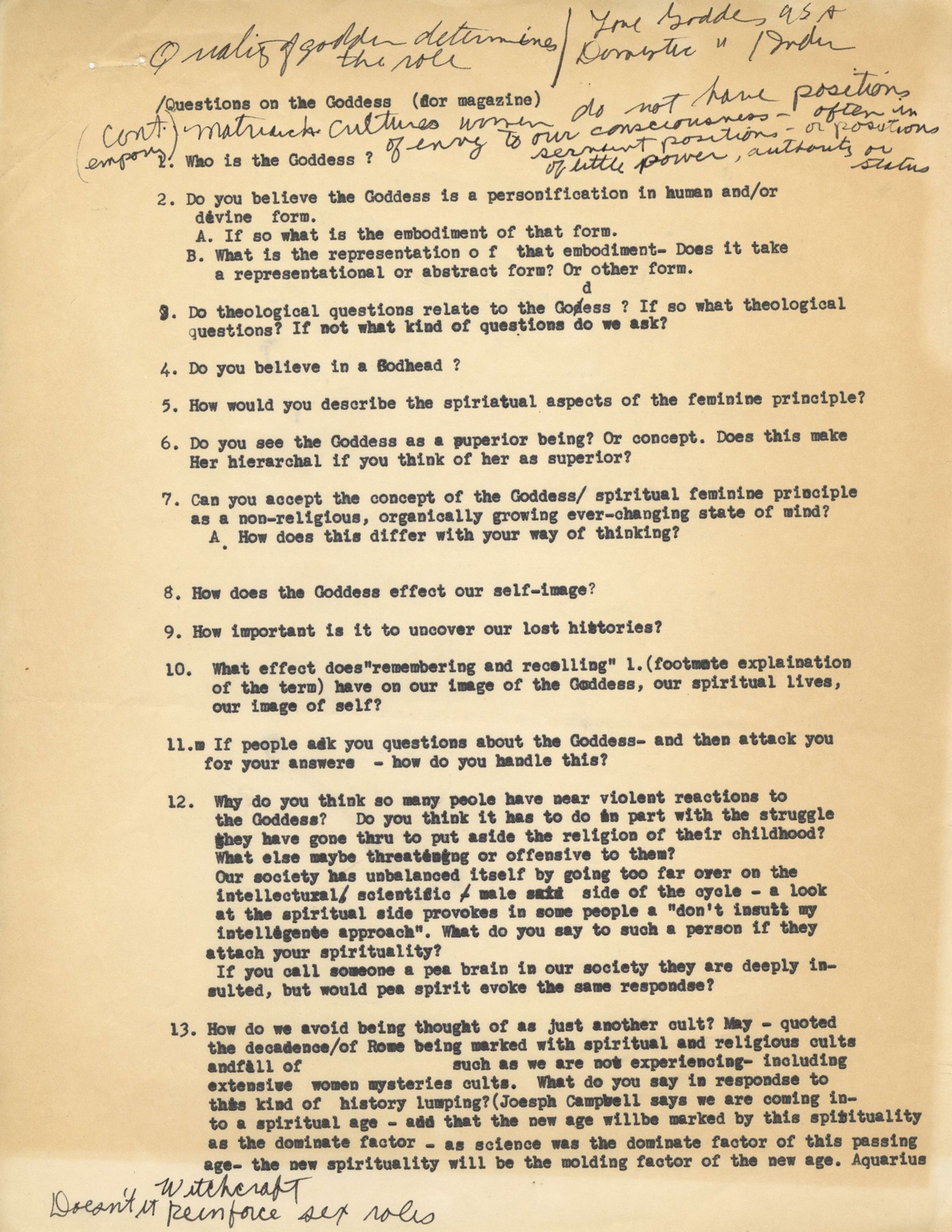
Copyright held by the Estate of Mary Beth Edelson; preserved through a partnership with The Feminist Institute. See record
These images include a letter penned by Edelson on June 18, 1976 and sent to other Goddess lovers that included a series of questions on the Goddess. These materials from Edelson’s archives are some of the formative ideas leading to the Heresies #5 Goddess issue published in 1978.
Related items from the archive
Written by Dr. Kathleen Wentrack
© 2019 Kathleen Wentrack
Kathleen Wentrack, PhD, is a Professor of Art History at The City University of New York, Queensborough CC and the editor of the forthcoming book “Collaboration, Empowerment, Change: Women’s Art Collectives.” She recently published “1970s Feminist Practice as Heterotopian: The Stichting Vrouwen in de Beeldende Kunst and the Schule für kreativen Feminismus,” in “All Women Art Spaces in the Long 1970s” edited by Agata Jakubowska and Katy Deepwell (Liverpool University Press, 2018). She is a contributing editor to Art History Teaching Resources and Art History Pedagogy and Practice and a co-coordinator of The Feminist Art Project in New York City.
Produced by Erica Galluscio
Photography of studio space provided by Kolin Mendez Photography
Accola Griefen Fine Art exhibition photos courtesy of Accola Griefen Fine Art: Rob van Erve
Images of “Goddess Tribe” installation courtesy of David Lewis New York
Select Bibliography
Buszek, Maria Elena. “Mothers and Daughters, Sluts and Goddesses: Mary Beth Edelson and Annie Sprinkle.” In: It’s Time for Action (There’s No Option). About Feminism. Ed. Heike Munder. Zurich: Migros Museum für Gegenwartskunst and JRP/Ringier, 2007, 228-61.
Edelson, Mary Beth. The Art of Mary Beth Edelson. New York: Seven Cycles, 2002.
Edelson, Mary Beth. Firsthand: Photographs by Mary Beth Edelson, 1973-1993 and Shooter Series. Essay by Jan Avgikos, “No Reverse Gear.” Mary Beth Edelson: New York, 1993.
Edelson, Mary Beth. Interview with Kathleen Wentrack. New York, 12 September 2008.
Edelson, Mary Beth. “Male Grazing: An Open Letter to Thomas McEvilley.” In: Feminism-Art-Theory: An Anthology, 1968-2000.” Ed. Hilary Robinson. Oxford: Blackwell, 2001, 592-94. First published as “Objections of a ‘Goddess Artist:’ An open Letter to Thomas McEvilley.” New Art Examiner 16, No. 8 (April 1989): 34-38.
Edelson, Mary Beth. “Pilgrimage/See for Yourself: A Journey to a Neolithic Goddess Cave, 1977. Grapceva, Hvar Island Yugoslavia.” Heresies: A Feminist Publication of Art and Politics #5, Spring 1978: 96-99.
Edelson. Mary Beth. Seven Cycles: Public Rituals. With an Introduction by Lucy R. Lippard.” New York: Mary Beth Edelson, 1980.
Edelson. Mary Beth. Shape Shifter: Seven Mediums. New York: Mary Beth Edelson, 1990.
Edelson. Mary Beth. “Success Has 1,000 Mothers: Art and Activism from Mary Beth Edelson’s Point of View.” In: Women’s Culture in a New Era: A Feminist Revolution? Ed. Gayle Kimball. Lanham, Maryland: The Scarecrow Press, 2005, 27-60..
Freitag, Barbara. Sheela-Na-Gigs: Unraveling an Enigma. London: Routledge, 2004
Gimbutas, Marija. Gods and Goddess of Old Europe, 7000 to 3500 BC/Myths, Legends, and Cult Images. Berkeley: University of California Press, 1974.
Griefen, Kat. “Considering Mary Beth Edelson’s Some Living American Women Artists.” The Brooklyn Rail, March 2019, 38-9.
Höglinger, Nora. “Mary Beth Edelson: “The Goddess is Us.” In: Feminist Avant-Garde: Art of the 1970s, The Sammlung Verbund Collection, Vienna. Ed. Gabriele Schor. Munich: Prestel Verlag, 2016, 120-25.
Mesopotamian Gods and Goddesses. Ed. Vincent Hale and Vincent Croce. New York: Britannica Educational Publishing and Rosen Publishing Group, 2014.
Stone, Merlin. When God Was a Woman. New York: Dial Press, 1976.
Wack! Art and the Feminist Revolution. Ed. Lisa Gabrielle Mark. Los Angeles: The Museum of Contemporary Art, 2007.
Winifred Milius Lubell, The Metamorphosis of Baubo: Myths of Women’s Sexual Energy, Nashville and London: Vanderbilt University Press, 1994